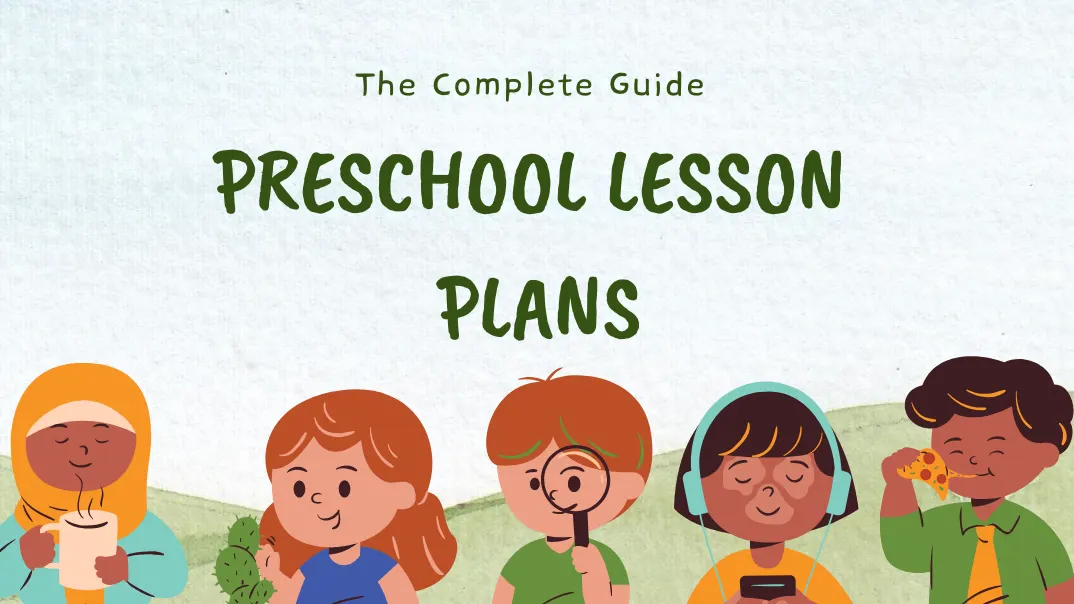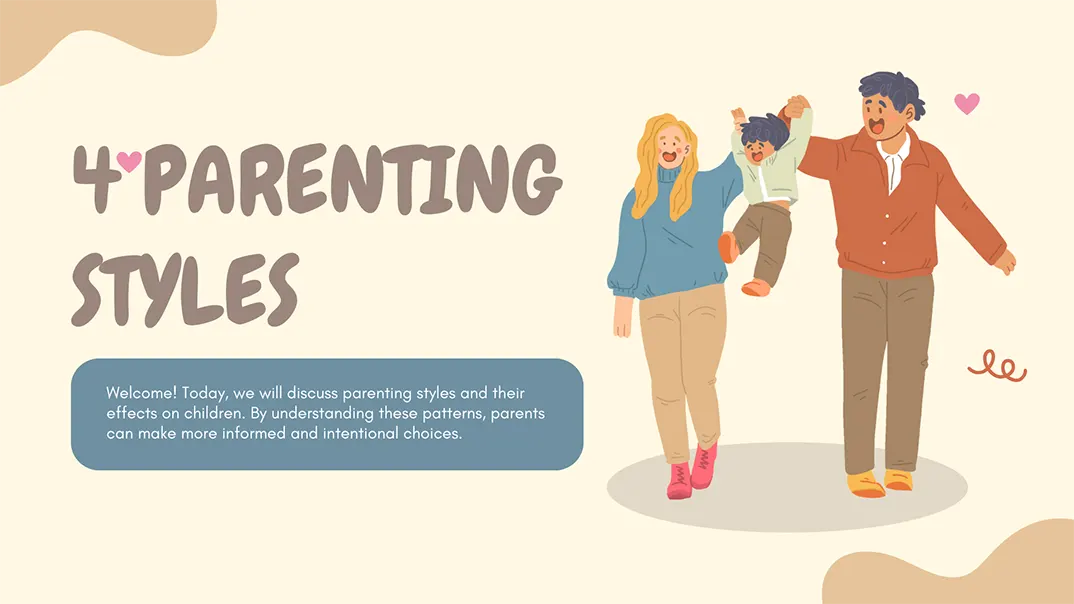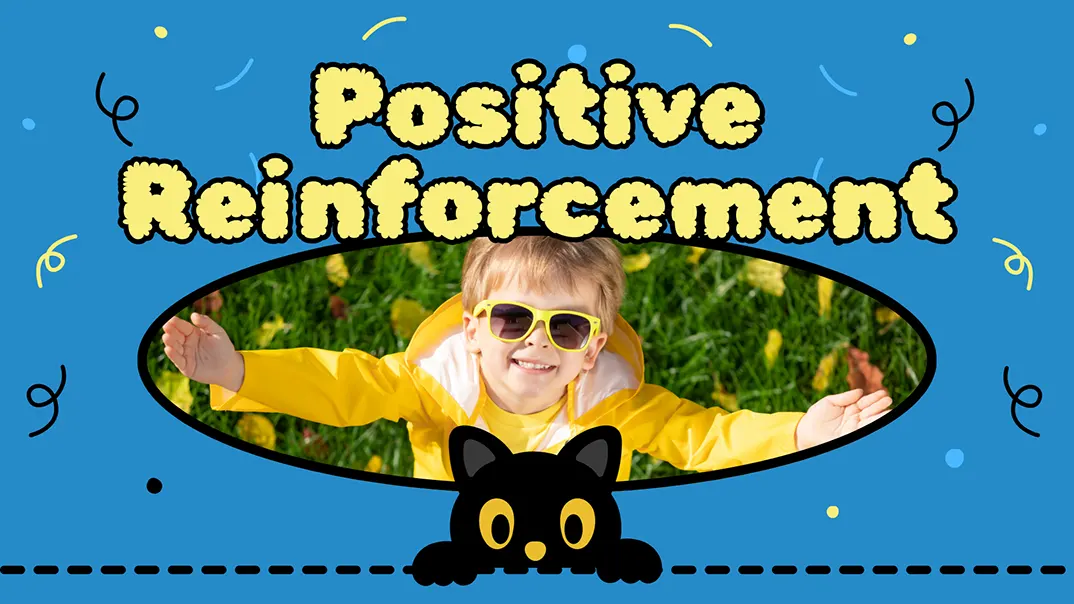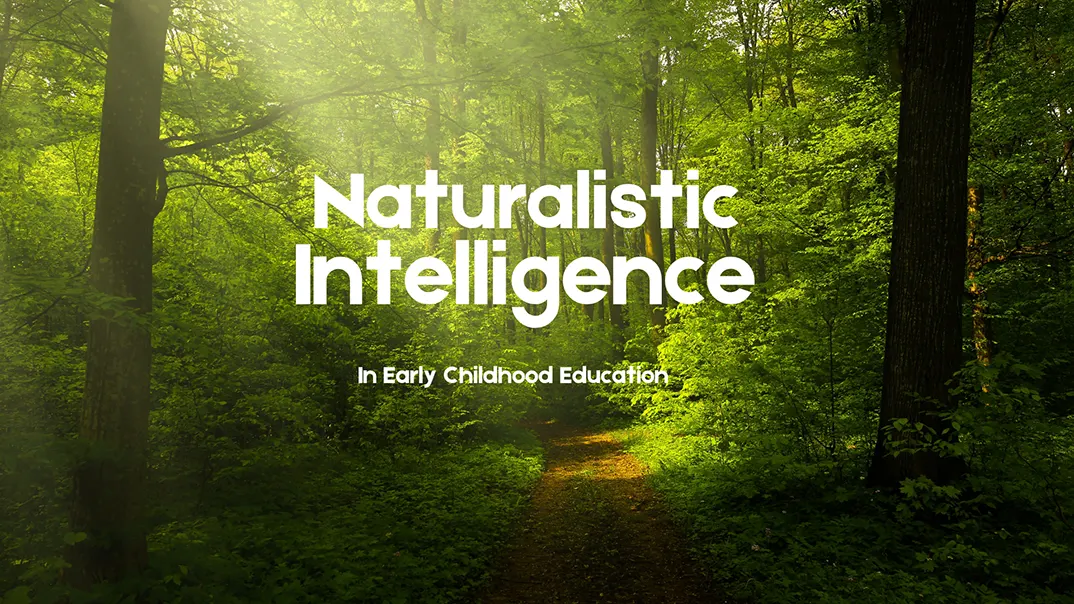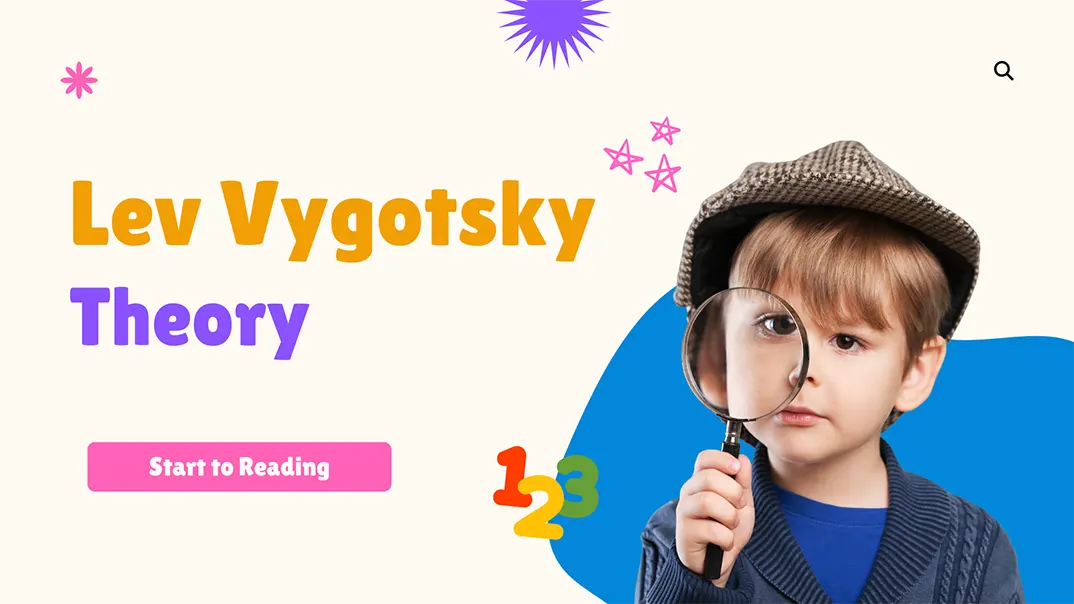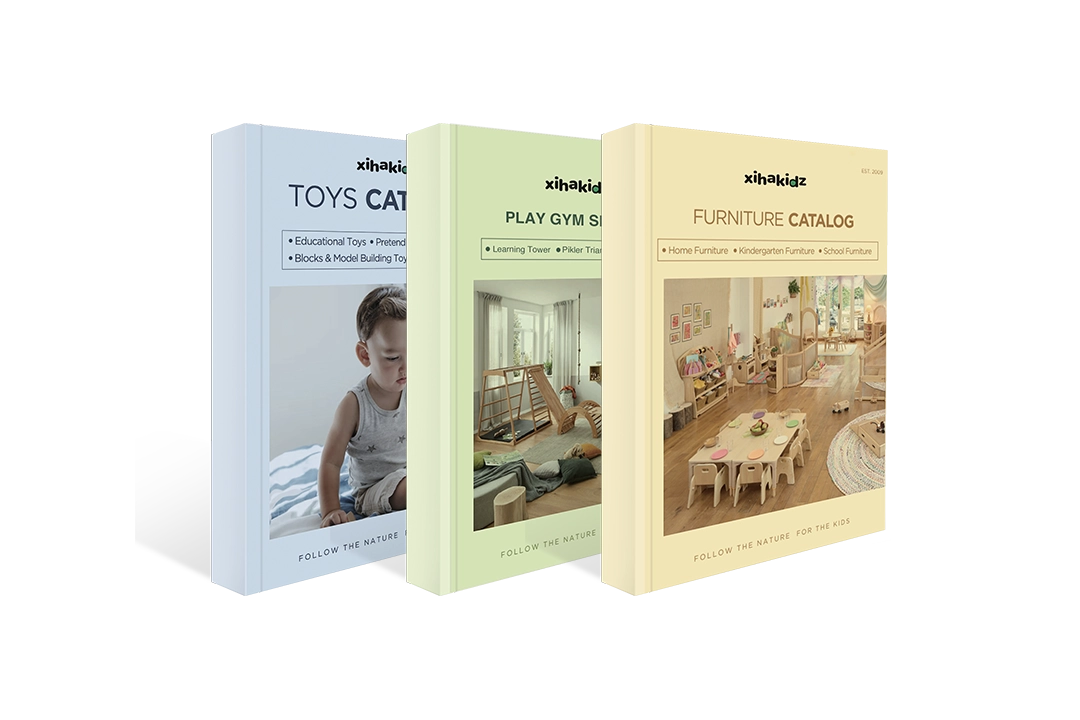Creating effective preschool lesson plans is a cornerstone of early childhood education. Educators must craft engaging, age-appropriate lessons that foster a love of learning, encourage creativity, and develop essential skills for young minds.
Whether you’re a seasoned educator or a new preschool teacher, understanding how to develop a comprehensive lesson plan can make a huge difference in the effectiveness of your teaching. Preschool lesson plans help create a structured environment where children can explore new concepts, build essential skills, and engage in purposeful play.
What are Preschool Lesson Plans?
Preschool lesson plans are a detailed outline of the activities, topics, and teaching strategies educators use to guide children through various learning experiences. These plans serve as a roadmap, ensuring that learning is structured and intentional while remaining flexible enough to respond to the needs and interests of the children. A well-organized lesson plan typically includes specific objectives, materials, activities, and a timeline to help the educator stay on track.
The beauty of preschool lesson plans lies in their ability to combine structure with creativity. Teachers can adapt the plan as needed, but the framework ensures that learning goals are met.
Why Are Preschool Lesson Plans Important?
A well-structured Preschool Lesson Plan provides teachers and students direction and a clear focus. These plans are not just a schedule but a roadmap that ensures meaningful and effective learning experiences. Below, we explore why these lesson plans for preschool are essential for development and how they impact children’s growth.
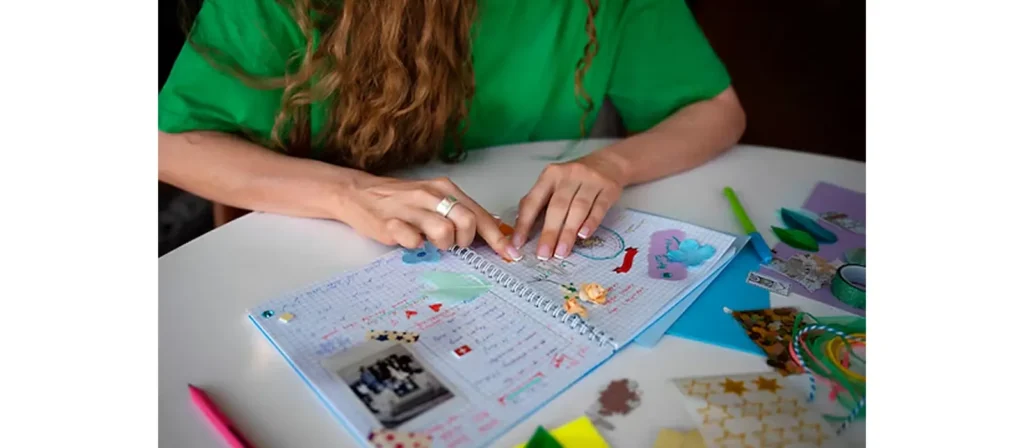
1. Align with Learning Goals
Every lesson plan for preschool must align with developmental goals. Clear learning objectives are fundamental in guiding the activities. Whether the aim is teaching shapes, colors, or basic numbers, these goals help preschool teachers plan lessons that ensure all activities support the child’s developmental milestones. Clear goals keep the lesson organized and focused so children get the most out of every lesson.
2. Keep Preschoolers Active
Preschoolers thrive on physical activity. A successful preschool lesson plan includes engaging activities that get children moving. Whether it’s simple gross motor skills exercises like jumping or fine motor activities like building with blocks, keeping children physically engaged promotes physical and cognitive development. Combining lesson plan activities for preschoolers that involve both body and mind ensures maximum learning.
3. Holistic Development
Preschool lesson plans are designed to promote holistic development in children. This means integrating activities that target various developmental areas, such as social skills, cognitive abilities, and emotional growth. Incorporating dramatic play, interactive group activities, and creative arts into your preschool lesson plan themes helps support the growth of well-rounded children ready to succeed in school and beyond.
4. Encourage Emotional Development
Teachers can help children build emotional intelligence through structured lesson plans for preschoolers. Activities like group games or storytelling encourage children to express their feelings and understand those of others. Including emotional intelligence activities within your preschool education lesson plans promotes empathy, kindness, and emotional regulation, which are essential for social development.
5. Support Cognitive and Social Growth
Preschool is a critical time for cognitive and social development. Lesson plans for preschool that combine learning with social interaction prepare children for success in school. For example, group activities help preschoolers develop social skills, while activities like counting games, puzzles, and simple science experiments help build cognitive abilities. Integrating these elements into your preschool lesson plan ideas supports balanced growth in all areas.
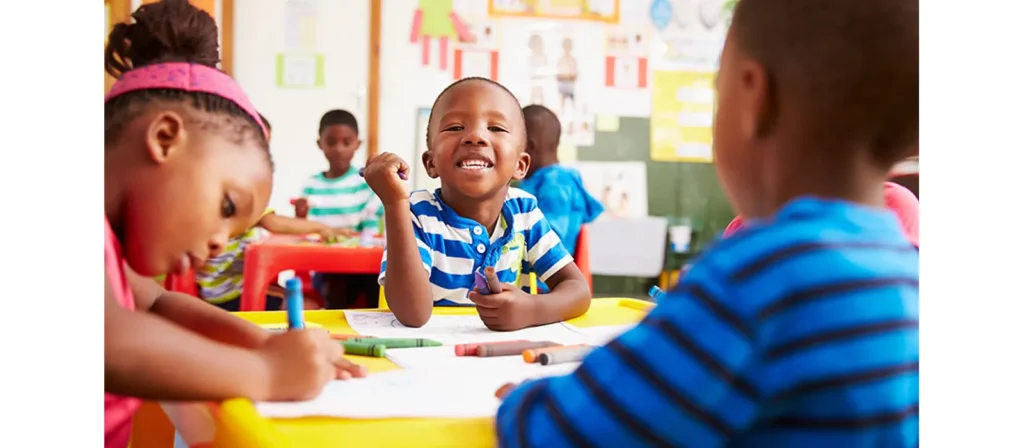
Basic Components of Preschool Lesson Plans
Creating an effective preschool lesson plan requires understanding the basic components that make it work. These elements should align with developmental goals and cater to the needs of the children in your classroom. Let’s dive into the critical parts of any preschool education lesson plans.
Establish Learning Goals
The first step in creating a lesson plan format for preschool is identifying what the children should achieve by the end of the lesson. These learning goals should be age-appropriate, measurable, and clear. For example, “By the end of the lesson, children will be able to identify three different animals and their sounds.” Setting clear goals helps teachers and students stay on track and ensures the lesson is purposeful.
Materials and Resources
Materials are a crucial part of any lesson plans for preschoolers. Whether you need basic supplies like paper, crayons, and glue or more specific items like books, educational games, or puppets, having the right materials makes the lesson smoother and more engaging. List the resources required for each activity in your preschool lesson plan so you’re prepared in advance.
Transform Your Classroom with Custom Furniture Solutions
Lesson Flow
A well-structured lesson plan in preschool has a clear flow, guiding the teacher and the students through the learning process. Start with a brief introduction to the classroom themes and the main activities to reinforce the lesson’s goals. Conclude with a wrap-up session where children can share what they’ve learned, ask questions, or engage in reflective activities. The lesson flow should keep children engaged and allow them to participate in active learning.
Evaluation
Evaluation in preschool lesson plans doesn’t always mean tests or quizzes. Instead, it refers to observing how well children grasp the lesson’s objectives through participation and interaction. For instance, if your lesson goal is to teach the children how to count, evaluate their understanding by observing whether they can correctly identify and count objects. The evaluation stage gives teachers valuable feedback on the effectiveness of the lesson and where to focus future instruction.
Reflection
Reflection allows teachers to assess what went well during the lesson and where improvements can be made. After every lesson, take some time to reflect on the lesson’s flow, the children’s engagement, and the success of the activities. Were the children interested? Did they meet the learning goals? This reflection helps fine-tune future lesson plans for preschoolers for even better outcomes.
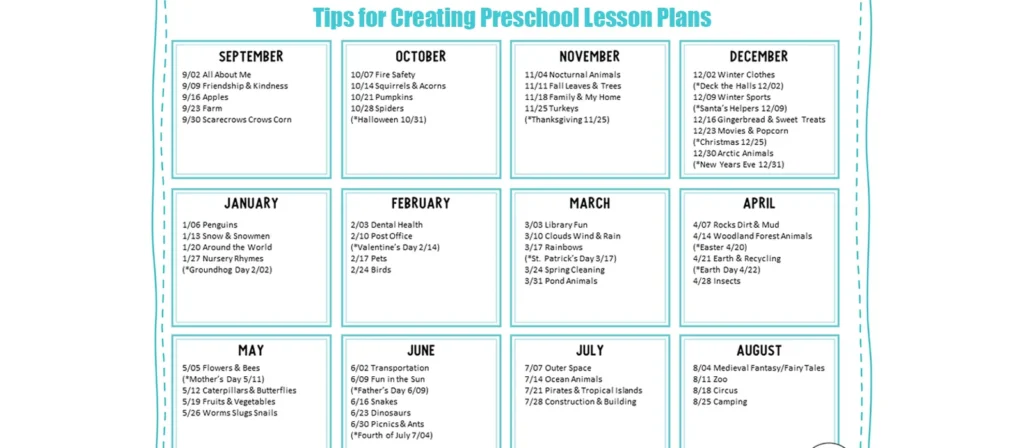
Tips for Creating Effective Preschool Lesson Plans
While every lesson plan should be tailored to the children in your care, a few general tips can make your plans even more effective. Here are some best practices to remember when creating your preschool lesson plans.
1. Clear Purpose
Each lesson should have a clear and specific purpose. Start with a question like, “What do I want the children to learn today?” This will guide your planning process and help you choose appropriate activities that directly support the lesson’s objectives. A lesson plan for preschoolers without purpose can feel disorganized and fail to deliver key learning outcomes.
2. Keep Activities Simple
Preschool lesson plans should include simple and clear activities that keep children engaged. Preschoolers have limited attention spans, and overly complicated tasks may cause frustration. Focus on simple but meaningful activities, like matching shapes, singing songs, or playing interactive games. The goal is to keep them excited and learning without overwhelming them.
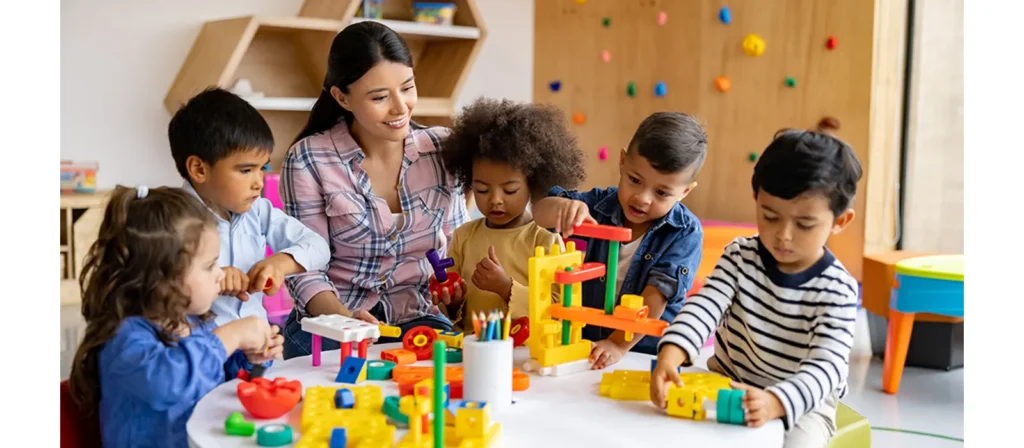
3. Consider Age
Understanding the developmental stage of the children you are teaching is essential when designing a lesson plan preschool. Children in different age groups have varying needs and abilities. Let’s break down how to design lesson plans for preschool based on the age of the children you are teaching:
- 2-4-Year-Old Lesson Plans: Children still master basic motor skills, language, and socialization at this age. Activities should be hands-on and sensory-based. Simple activities like shape recognition, finger painting, or basic songs work well. Focus on short, engaging activities with lots of repetition. These are perfect for lesson plans for preschoolers in this age group.
- 3-5-Year-Old Lesson Plans: Preschoolers in this age group are more capable of following simple instructions and engaging in imaginative play. Incorporate activities like storytelling, role-playing, or sorting games. They are also ready to learn about letters, numbers, and social skills through structured activities. These lessons should also include more engaging preschool lesson plan ideas like building blocks or pretend play, helping develop cognitive and social skills.
- 4-6-Year-Old Lesson Plans: Children develop stronger fine motor skills by this age and can follow more complex instructions. Preschool lesson plans for this age group should introduce foundational academic concepts like letter writing, basic math, and early science. Group discussions, interactive learning games, and collaborative art projects can help build cognitive and social skills. These activities form part of more advanced lesson plan ideas for preschoolers.
4. Based on Student Interests
Children are more likely to engage with lessons that align with their interests. If a child is fascinated by animals, incorporate them into the preschoolers’ lesson plans to keep them excited and motivated. Personalizing the lesson plans for preschool helps children feel connected to the learning experience and encourages them to participate actively.
Transform Your Classroom with Custom Furniture Solutions
5. Practice-Based Approach
Lesson plan activities for preschoolers are best when they are based on practice. Young children learn best by doing, so include plenty of opportunities to actively participate in activities like arts and crafts, sensory play, and group projects. These activities will help children retain what they’ve learned and allow them to express their creativity.
6. Allocate Appropriate Time
Preschoolers have limited attention spans, so keeping activities short and manageable is essential. Plan for 10-15 minutes per activity, with breaks in between. This allows for maximum engagement without overwhelming the children. Be flexible with your preschool lesson plans and adjust based on the children’s energy levels and interests.
Preschool Lesson Plans Example
When crafting Preschool Lesson Plans, one of the best ways to structure your teaching is through real-life examples. Below, I’ll outline a few Preschool Lesson Plans, each with their respective Goals, Procedures, Materials, Evaluation, and Reflection. This approach helps create a clear framework that can be easily adapted for various themes and topics.
Example 1: Animal Shapes & Colors Exploration
This lesson combines the fun of learning about animals with the educational benefits of shapes and colors. Preschoolers will explore how different shapes can represent animals and associate these shapes with various colors. It helps children better understand basic shapes and colors while engaging them in creative play.
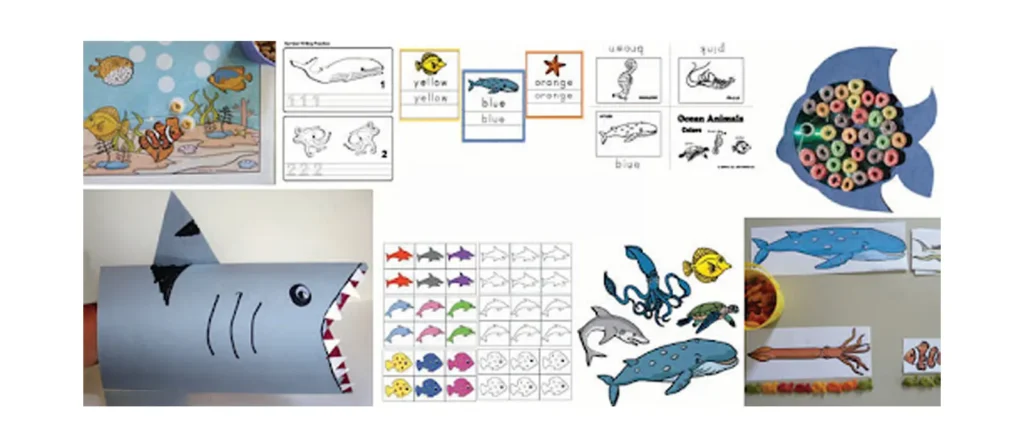
Goal:
By the end of the lesson, children should be able to identify basic shapes (circle, square, triangle) and associate them with animals (turtles, lions, and others). Additionally, they will practice naming and recognizing different colors.
Materials:
- Animal picture cards (e.g., lion, elephant, turtle)
- Shape cutouts (circle, square, triangle)
- Colored construction paper (red, blue, yellow, green)
- Glue sticks
- Markers or crayons
Procedure:
- Introduction (5 minutes):
Start by showing the children a set of animal picture cards. Discuss the different animals and ask the children to name them. Introduce shapes by holding up the cutouts and explaining how they resemble the shapes of the animals, like the round shape of a turtle’s body. - Interactive Activity (10 minutes):
Hand each child a set of colored construction paper and shape cutouts. Ask them to glue the shapes onto the paper, matching each shape with an animal. For example, the circle can represent the turtle’s shell, and the triangle can represent the lion’s ears. - Group Activity (10 minutes):
After completing their creations, gather the children in a circle. Hold up the animal cards and ask the children to identify the shapes and colors they see. For example, “What shape is the turtle’s shell? What color is the lion’s mane?” - Wrap-up (5 minutes):
Have each child share their work with the class, identifying the shapes and colors used. Display the completed artwork on a bulletin board for everyone to admire.
Evaluation:
Assess the children’s ability to identify and match the shapes with the animals correctly. Look for their ability to name and recognize the colors during group discussions and individual activities.
Reflection and Adjustment:
If some children struggle to match the shapes with the animals, you may need to adjust the activity using more obvious or larger shapes. Consider introducing more interactive elements, such as a “shape song,” to reinforce the concept in a fun way.
Example 2: Nature Walk and Observation
This lesson takes children outside to explore the natural world, encouraging them to observe plants, flowers, and trees. They will learn about the environment through hands-on observation, using magnifying glasses to explore small details and develop their understanding of nature.
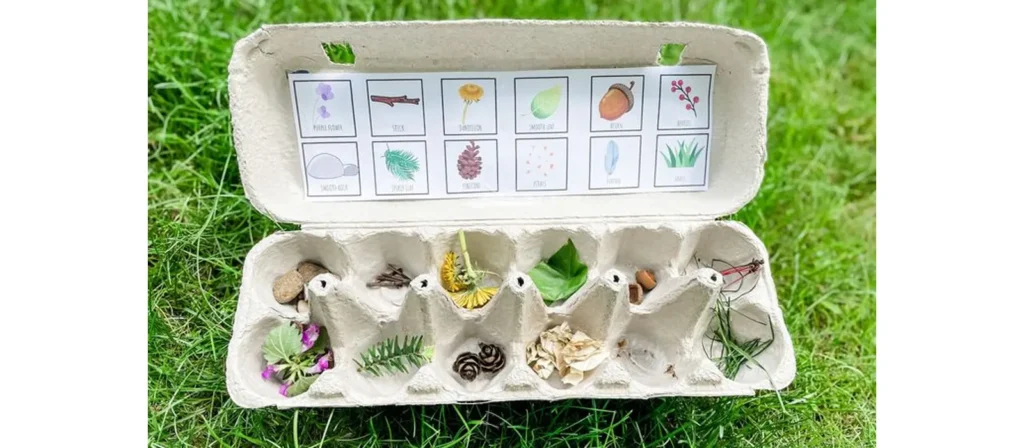
Goal:
Children will learn to identify common plants and flowers, observe their characteristics, and begin to understand their role in the environment.
Materials:
- Magnifying glasses
- Small bags for collecting items
- Chart with images of common plants or flowers
- Crayons or colored pencils for drawing
Procedure:
- Introduction (5 minutes):
Begin by showing a chart with pictures of local plants and flowers. Explain the basic parts of a plant (roots, stems, leaves, flowers). Tell the children they will go outside today to look for these plants. - Nature Walk (15 minutes):
Take the children on a nature walk around the playground or nearby park. Provide each child with a magnifying glass to help them closely examine leaves, flowers, and trees. Please encourage them to find and collect small items like leaves or flower petals. - Drawing & Sharing (10 minutes):
Once back inside, give the children paper and crayons. Ask them to draw what they saw during the walk, including a tree, a leaf, and a flower. Help the children identify and label the items in their drawings. - Wrap-up (5 minutes):
Have the children share their drawings with the class. Ask them to describe what they saw on their nature walk, helping them to recall specific plants and flowers. Reinforce their learning by repeating the names of the plants.
Evaluation:
Evaluate the children based on their ability to observe and identify plants during the walk. Assess their ability to recall the names and characteristics of the plants in their drawings. Observe their engagement during the walk and their ability to describe what they saw.
Reflection and Adjustment:
If the children seem distracted or disinterested during the walk, consider breaking the walk into smaller, more manageable sections with frequent stops for discussion. If some children struggle with drawing, simplify the task or provide extra support by highlighting key details they can focus on.
Example 3: Exploring Numbers with a Farm Theme
This lesson allows preschoolers to practice counting from 1 to 10 using a fun farm animal theme. The lesson incorporates hands-on activities with animal figures and songs to engage children in number recognition, counting, and basic math skills.
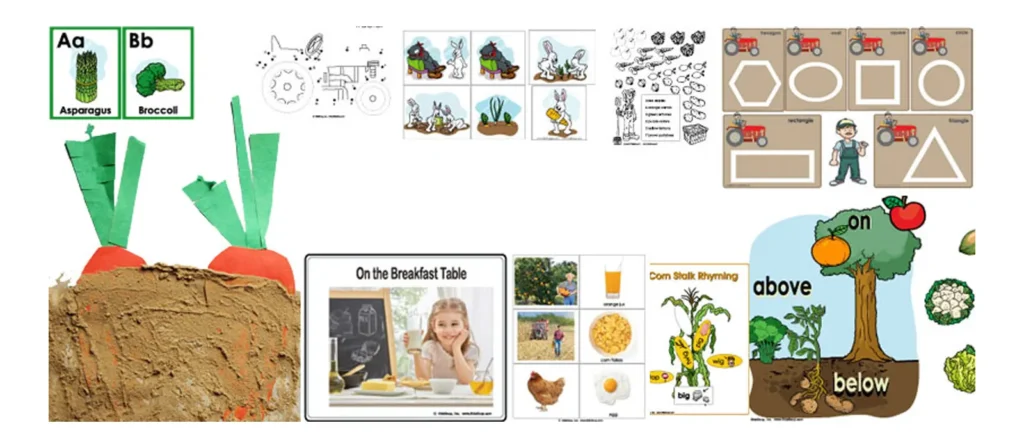
Goal:
By the end of the lesson, children will be able to count from 1 to 10 and associate each number with a farm animal.
Materials:
- Number cards (1–10)
- Farm animal figures (plastic or plush)
- Counting mats with numbers 1–10
- Farm-themed songs (e.g., “Old MacDonald Had a Farm”)
Procedure:
- Introduction (5 minutes):
Show the children the number cards and ask them to count aloud with you. Introduce each number one by one, associating it with a farm animal. For example, “One cow, two chickens, three pigs.” - Counting Activity (10 minutes):
Give each child a counting mat with numbers 1 through 10 and a set of farm animal figures. Ask them to place the correct number of animals next to the corresponding number on the mat (e.g., one cow and two chickens). - Group Activity (10 minutes):
Sing a farm-themed song, such as “Old MacDonald,” and ask the children to raise the correct number of fingers when you sing about each animal. For example, “On that farm, he had one cow” — the children will hold up one finger. - Wrap-up (5 minutes):
Review the numbers and animals by asking the children questions like, “How many pigs were on the farm?” Please encourage them to answer by counting and using their fingers.
Evaluation:
Evaluate the children’s ability to count from 1 to 10 and assess their ability to match the correct number of animals with the number cards. Observe how well they participate in the group activity and if they can recognize and recall the numbers.
Reflection and Adjustment:
If some children struggle with number recognition, consider simplifying the activity by using smaller numbers or providing additional visual aids. You can also reinforce learning through repetition or introducing a number-based game to enhance engagement.
Example 4: Colors in Nature
In this lesson, children explore the primary colors (red, yellow, blue) by examining natural objects. They will collect natural items like flowers, leaves, and stones, learning to associate colors with real-world objects.
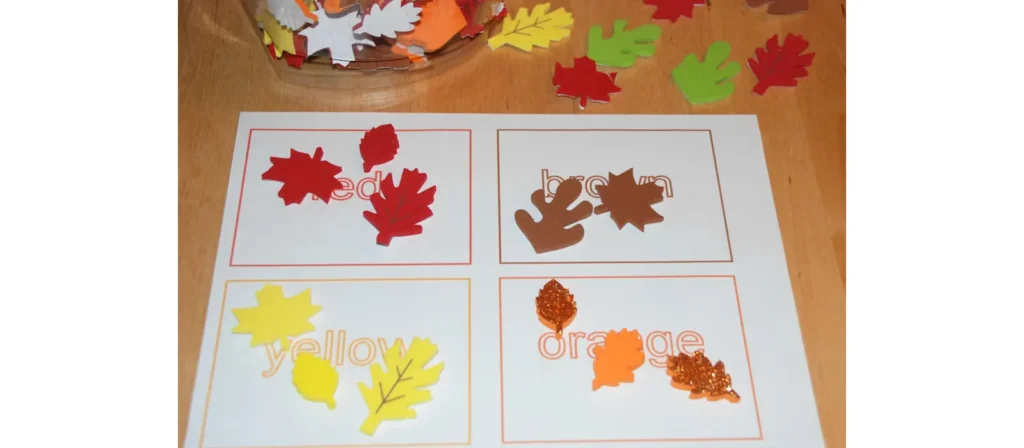
Goal:
Children will learn to identify and name the primary colors (red, yellow, blue) and recognize them in natural objects.
Materials:
- Small baskets or bags for collecting objects
- Color swatches (red, yellow, blue)
- Paper for making collages
- Glue sticks
Procedure:
- Introduction (5 minutes):
Introduce the primary colors by showing color swatches. Discuss examples of natural objects that are these colors, like red apples, yellow flowers, and the blue sky. - Outdoor Exploration (15 minutes):
Take the children outside to look for objects in nature that match the primary colors. Please encourage them to collect leaves, flowers, or small items that fit the discussed colors. - Collage Creation (10 minutes):
Once back in the classroom, give each child a piece of paper and glue sticks. Ask them to create a collage using the items they collected. They should arrange their objects by color and glue them to the paper. - Wrap-up (5 minutes):
Let the children share their collages with the class, explaining what they found and what colors were used. Reinforce the primary colors by pointing them out in the collages and encouraging the children to name them.
Evaluation:
Evaluate the children’s ability to identify and collect objects corresponding to the primary colors. Look for accuracy in matching the colors to the correct items in their collages.
Reflection and Adjustment:
If children have difficulty identifying the colors, you may need to provide more examples or simplify the activity. You could also consider using additional sensory materials (e.g., fabric swatches or colored toys) to make color recognition more engaging.
Transform Your Classroom with Custom Furniture Solutions
How to Incorporate Fun Activities into Preschool Lesson Plans?
Including fun activities is essential for maintaining the attention of preschoolers. These activities don’t just need to be entertaining—they should also be educational. Here are a few fun ideas for your preschool lesson plans:
- Storytime: Children love stories, so make storytime interactive with puppets or props. Choose books related to the theme of the lesson to reinforce learning.
- Outdoor Play: Incorporate nature into your preschool lesson plans with activities like scavenger hunts or nature walks. Children can learn about their environment while staying active.
- Arts and Crafts: Use arts and crafts to reinforce the lesson theme. Create simple projects like paper animals or colorful charts related to the topic.
- Music and Movement: Singing songs and dancing help children learn through rhythm and movement. Lesson plans for preschoolers that include music are perfect for reinforcing new concepts like the alphabet or numbers.
Integrating fun into your preschool lesson plans makes learning a joyful experience that children will remember.

How to Incorporate Themes into Preschool Lesson Plans?
Thematic teaching can transform preschool lesson plans into immersive learning experiences that encourage children to connect and develop a deeper understanding of the world around them. A thematic approach involves organizing lessons around a central theme—such as animals, nature, or community—which allows children to explore the subject from multiple perspectives and across different activities.
Choosing the Right Theme
The first step in creating a thematic preschool lesson plan is selecting a theme that aligns with your educational goals and engages the children. A good theme should be broad enough for subject exploration but specific enough to keep the lesson focused. For example:
- Animals: Lessons could cover a variety of animals, their habitats, and their characteristics. Activities might include reading animal stories, creating animal crafts, and singing songs about different animals.
- Seasons: A theme focused on the four seasons can include lessons on weather, natural changes, and seasonal activities. Children could create seasonal art projects, read books about the season, and learn about the changing environment.
Integrating the Theme Across Different Subjects
A thematic approach should weave the theme throughout the entire lesson plan. For example, if the theme is “Ocean Life,” you might:
- Read a book about ocean animals to teach literacy.
- Create an ocean scene collage with blue and green paper to support fine motor development.
- Learn about ocean animals through songs or rhymes to promote language development.
The theme should also be incorporated into the environment. Set up themed areas in the classroom with related materials and visual aids to reinforce the theme throughout the day.
Transform Your Classroom with Custom Furniture Solutions
Adapting Activities to the Theme
Once the theme is chosen, adapt your lesson plan activities for preschoolers to fit. A lesson plan focused on the theme of “Shapes” might involve:
- Introduction: Show children a shape book and discuss the different shapes.
- Main Activity: Have children sort objects based on their shape (circles, squares, triangles). Use play dough to help them make shapes.
- Closing: Sing a song about shapes or go on a shape hunt around the classroom.
Themes make learning fun and relevant, and they help connect what children learn in one lesson to future lessons. By incorporating various activities—art, games, reading, and sensory play—your thematic preschool lesson plans can keep young learners engaged while providing a rich educational experience.
Benefits of Thematic Preschool Lesson Plans
Thematic preschool lesson plans offer numerous benefits. Children can connect different concepts and experiences by focusing on a theme. Let’s explore some of the key benefits of using a thematic approach in lesson plans for preschoolers.
1. Engagement and Motivation
A key benefit of thematic preschool lesson plans is increased engagement and motivation. Children are naturally curious, and organizing lessons around a theme that interests them helps capture their attention. Whether learning about dinosaurs or exploring space, a theme makes the learning experience more meaningful and fun. Active engagement makes children more likely to retain the information and develop a love for learning.
2. Connections and Context
A thematic approach helps preschoolers make connections between different areas of learning. For example, if the theme is “Community Helpers,” the lessons might include learning about the roles of firefighters, doctors, and teachers. Children can understand how each community helper contributes to their lives. Children develop a deeper understanding of the world around them by connecting lessons across subjects.
3. Vocabulary and Language Development
Thematic lesson plans for preschoolers are excellent for enhancing vocabulary and language development. Teachers can use the same theme across multiple lessons to introduce new vocabulary in various contexts. For example, during a “Farm Animals” theme, children might learn words like “barn,” “tractor,” and “cow.” As they engage in different activities—reading books, singing songs, or discussing pictures—they have multiple opportunities to hear and use new words.
Conclusion
Effective preschool lesson plans are the foundation of a successful preschool program. By incorporating clear learning goals, appropriate materials, and fun activities, teachers can create a rich and engaging learning environment that promotes the development of preschoolers. Remember to evaluate and reflect on each lesson to improve and adapt your lesson plans for preschoolers for continued success.

